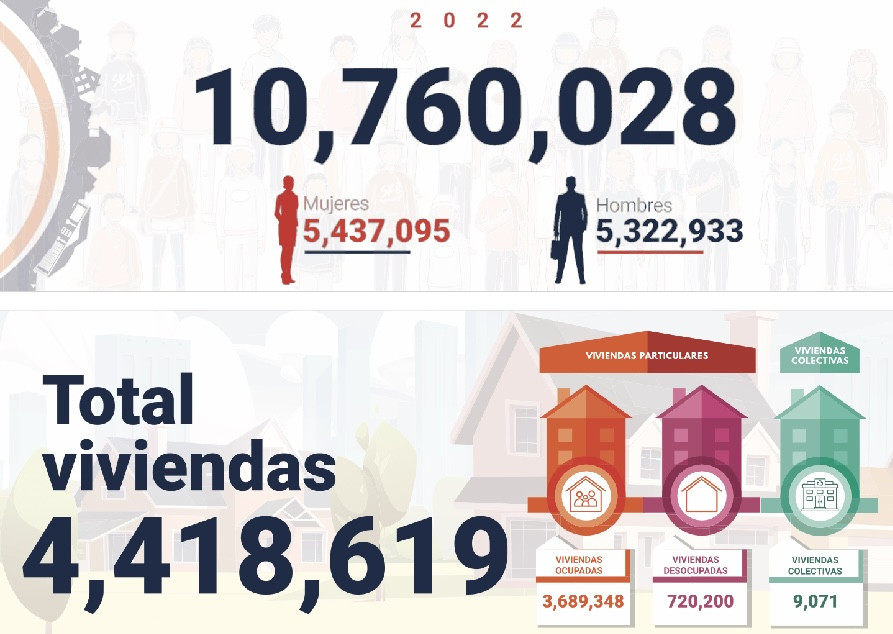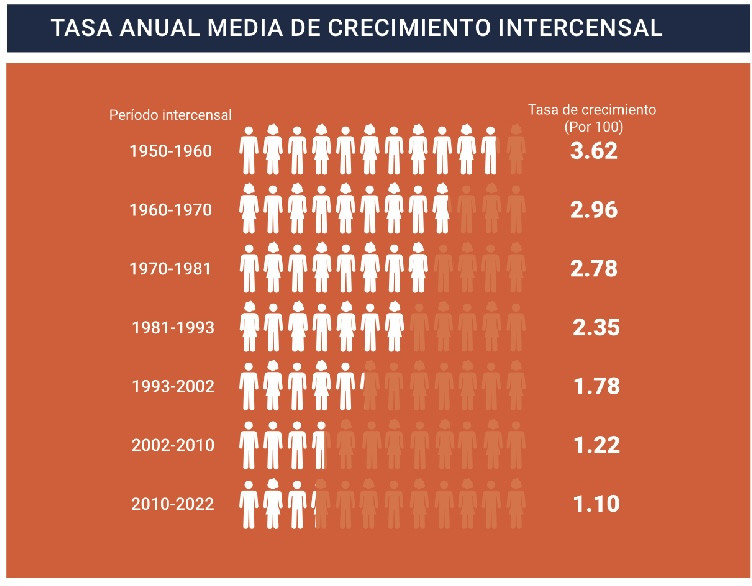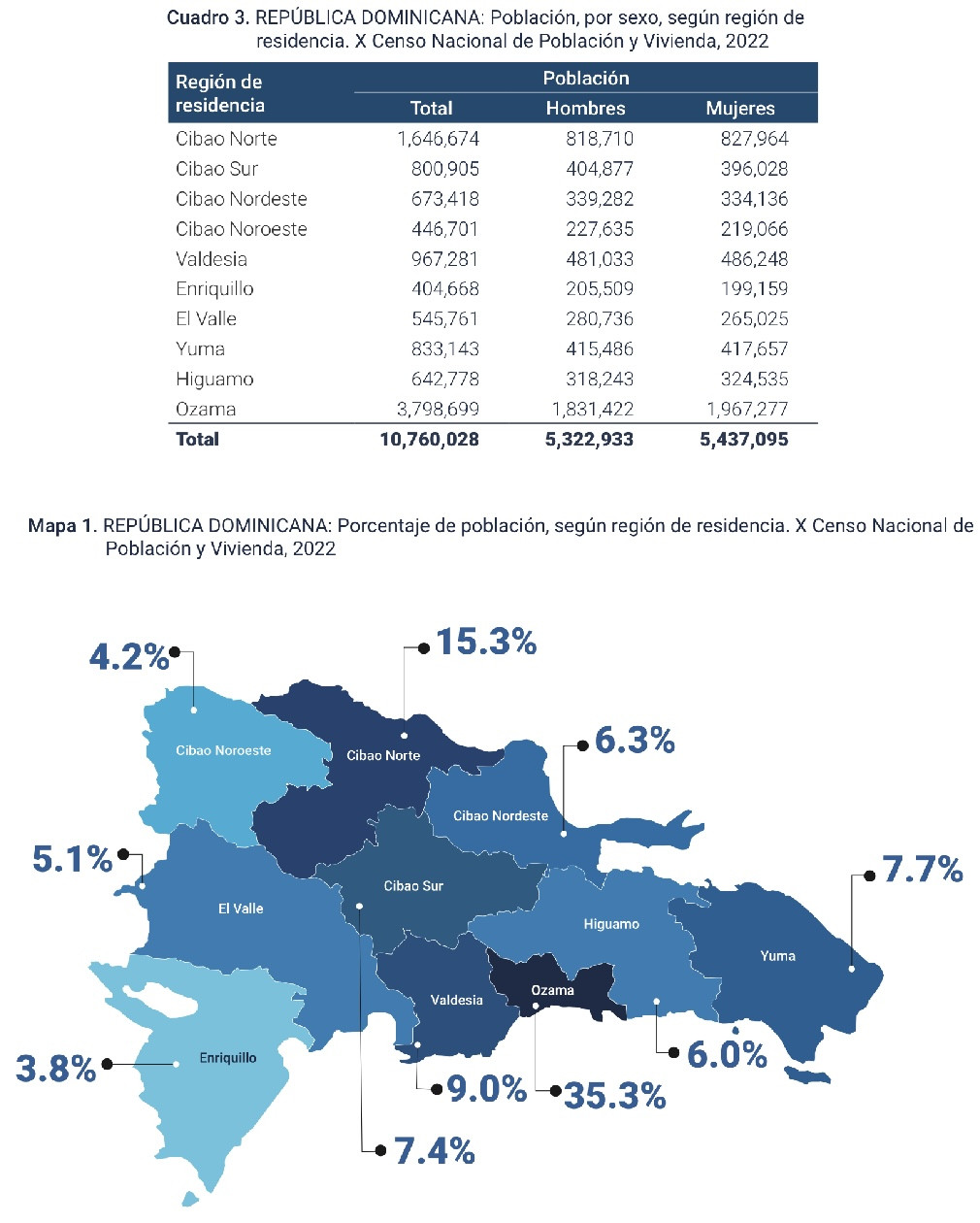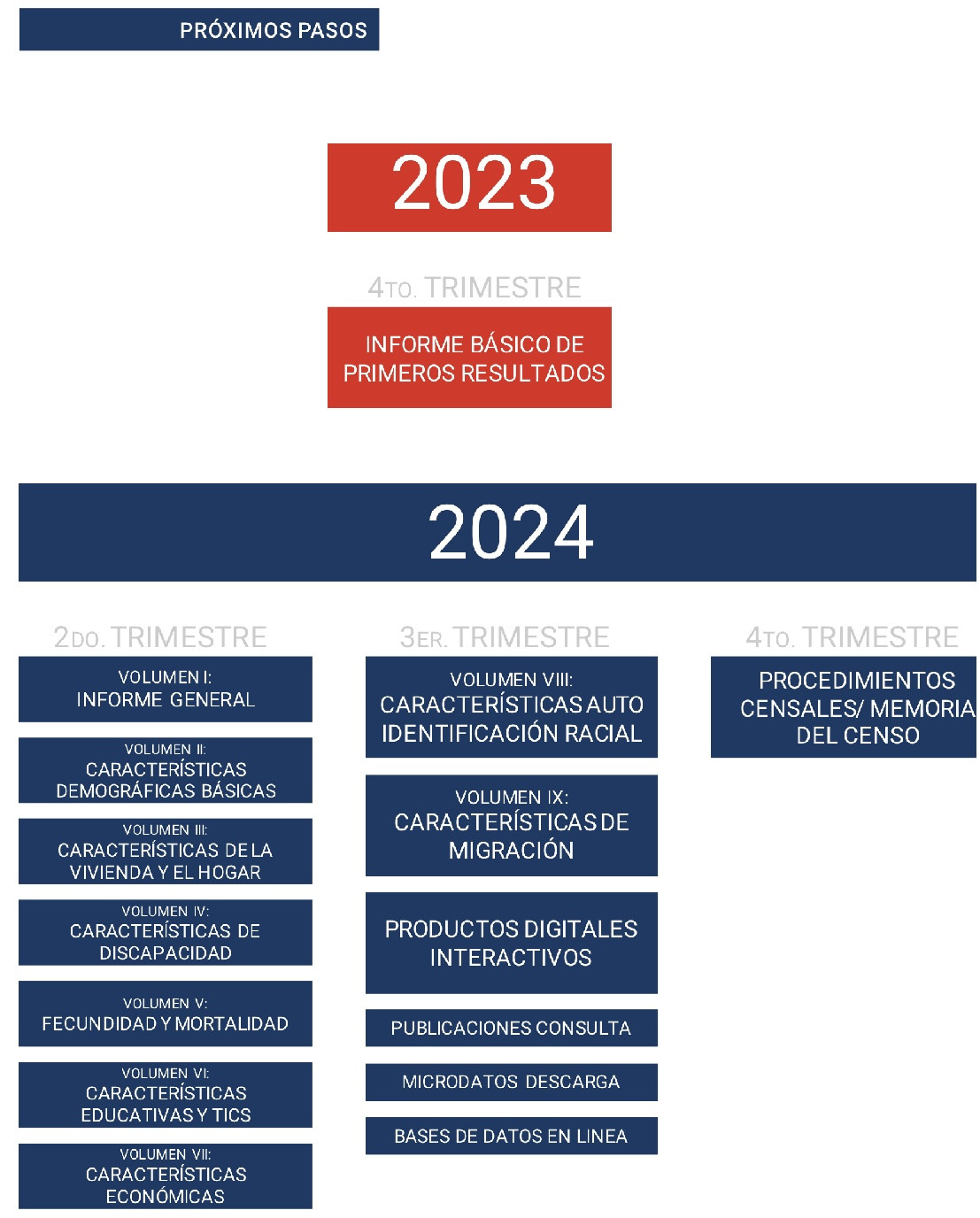After much waiting, the preliminary results of the X Census of the Dominican Republic has been released by the Oficina Nacional de Estadisticas (ONE). This is the first of several releases. All the information will be released by the end of 2024.

Total population and homes (occupied, unoccupied, collective) in the country.

Population growth continues its decline.

Population by region and map of the percentage of population of each regions.
Traditional Regions
Metropolitana (La Capital) = 3,798,699 (35.3%)
Cibao = 3,567,698 (33.0%)
Sur = 1,917,710 (17.8%)
Este = 1,475,921 (13.7%)
Notice that most of the population (68.5%) lives in the Capital and the Cibao. Despite all the population growth seen in Higüey and Bávaro/Punta Cana and the fact it's the most visited region by international tourists, the East region continues to be the least populated in the country. Despite that, it should be noted that the East population is greater than the total populations of every Caribbean country/territory except Haiti, Cuba, Jamaica, Puerto Rico and possibly Trinidad.

Population by provinces.
The Top 5 Most Populated Provinces
Santo Domingo = 2,769,589 (25.7%)
Santiago = 1,074,684 (10.0%)
Distrito Nacional = 1,029,110 (9.6%)
San Cristóbal = 688,828 (6.4%)
La Altagracia = 446,060 (4.1%)
Provinces with Major Expats Beachside Hotspots
La Altagracia (Bávaro/Punta Cana) = 446,060 (4.1%)
Puerto Plata (Sosúa/Cabarete) = 338,354 (3.1%)
Samaná (Las Terrenas) = 111,990 (1.0%)

Next releases.
4th Quarter (2023): Basic Information of Data
2nd Quarter (2024): General Information, Basic Population Characteristics, Homes and Household Characteristics, Handicap Characteristics (first time), Birth and Mortality, Education Characteristics and Economic Characteristics.
3rd Quarter (2024): Self-Indentity Racial Classification (first time since the 1970's), Migration Characteristics, Interactive Digital Products, Research Publications, Microdata and Database.

Total population and homes (occupied, unoccupied, collective) in the country.

Population growth continues its decline.

Population by region and map of the percentage of population of each regions.
Traditional Regions
Metropolitana (La Capital) = 3,798,699 (35.3%)
Cibao = 3,567,698 (33.0%)
Sur = 1,917,710 (17.8%)
Este = 1,475,921 (13.7%)
Notice that most of the population (68.5%) lives in the Capital and the Cibao. Despite all the population growth seen in Higüey and Bávaro/Punta Cana and the fact it's the most visited region by international tourists, the East region continues to be the least populated in the country. Despite that, it should be noted that the East population is greater than the total populations of every Caribbean country/territory except Haiti, Cuba, Jamaica, Puerto Rico and possibly Trinidad.

Population by provinces.
The Top 5 Most Populated Provinces
Santo Domingo = 2,769,589 (25.7%)
Santiago = 1,074,684 (10.0%)
Distrito Nacional = 1,029,110 (9.6%)
San Cristóbal = 688,828 (6.4%)
La Altagracia = 446,060 (4.1%)
Provinces with Major Expats Beachside Hotspots
La Altagracia (Bávaro/Punta Cana) = 446,060 (4.1%)
Puerto Plata (Sosúa/Cabarete) = 338,354 (3.1%)
Samaná (Las Terrenas) = 111,990 (1.0%)

Next releases.
4th Quarter (2023): Basic Information of Data
2nd Quarter (2024): General Information, Basic Population Characteristics, Homes and Household Characteristics, Handicap Characteristics (first time), Birth and Mortality, Education Characteristics and Economic Characteristics.
3rd Quarter (2024): Self-Indentity Racial Classification (first time since the 1970's), Migration Characteristics, Interactive Digital Products, Research Publications, Microdata and Database.

